With savory and juicy sliced beef served over steamed rice, this delicious Yoshinoya Beef Bowl (Gyudon) is a keeper for a weeknight meal!
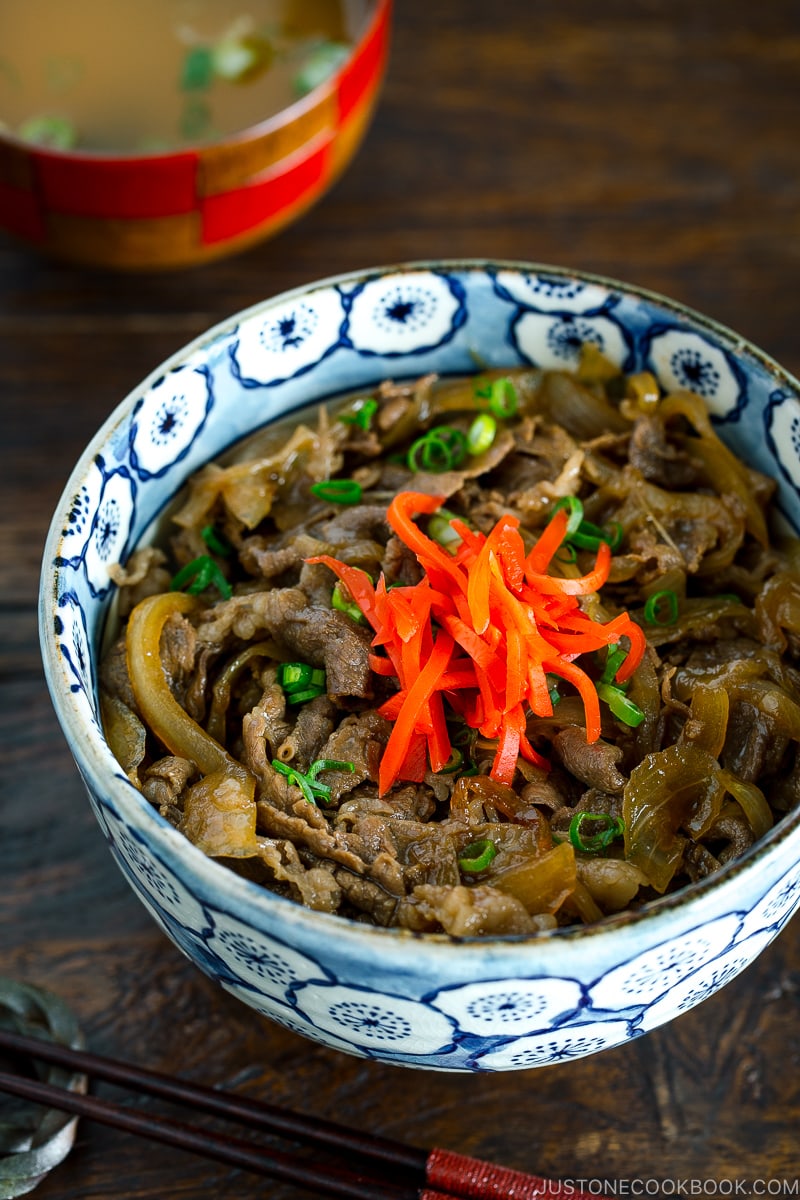
Gyudon (牛丼) or Beef Bowl is a popular quick meal in Japan. It consists of a bowl of steamed rice topped with thinly sliced beef and tender onion, simmered in a sweet and savory dashi broth seasoned with soy sauce and mirin.
What is Beef Bowl (Gyudon)?
Thanks to Yoshinoya (吉野家), the largest beef bowl restaurant chain, Japanese gyudon became known as the “beef bowl” and is enjoyed by many people all around the world. You might wonder when the Japanese started to enjoy gyudon.
The Japanese adopted Western customs like eating beef between the late 1800s and early 1900s and these customs eventually spread throughout Japan.
Gyudon originated from another dish, Gyunabe (牛鍋) and Sukiyaki (すき焼き) where thin slices of beef are cooked with vegetables in a pot. At some point, it was served over rice in a bowl as “donburi” (rice bowl).
In 1899, the first Yoshinoya restaurant opened in Tokyo’s Nihonbashi district. The use of cheaper beef cuts helped lower the cost, and ultimately drove the success of Gyudon. Today, it continues to be a popular quick, and inexpensive lunch menu for salarymen.
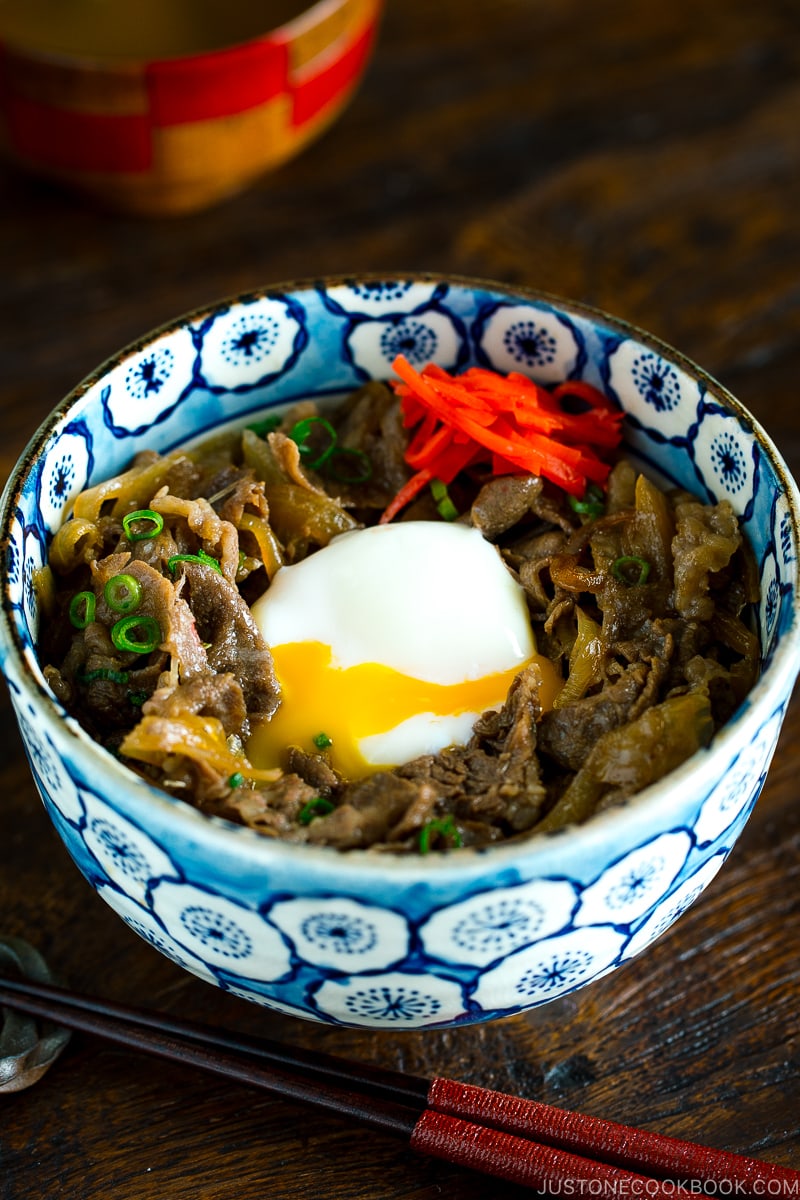
How to Make Yoshinoya Beef Bowl
In Yoshinoya’s gyudon, they simmer onion and thinly sliced beef in dashi broth and other seasonings. Every household makes gyudon slightly different, so feel free to adjust the flavor as you like.
Ingredients You’ll Need
- Thinly Sliced Beef: If you don’t eat beef, you can make this dish with thinly sliced pork as well. Just make sure the meat is thinly sliced. Japanese, Korean, and Chinese grocery stores carry thinly sliced meat (both pork and beef), but if you can’t find it in the refrigerated or frozen meat sections, you can purchase a block of meat and slice them on your own. I’ve added the instructions in the recipe below.
- Onion: If you really do not like onion, you can skip it; otherwise, please include it. Cooked onions are tender and give sweetness to the sauce. I consider the onion just as important as the meat in this recipe. You can use regular yellow onion, sweet onion, or even purple onion (if the color doesn’t bother you).
- Shirataki Noodles (Optional): I usually cook gyudon at the very last minute (not planned) so I don’t have shirataki noodles in my fridge. However, it’s a great addition to gyudon and it’s a smart way to add the volume of the food without adding more meat. The texture also improves with shirataki noodles.
- Dashi: This recipe requires dashi. We cook the beef and onion in the dashi-based sauce. You can make dashi in 3 ways if you’re not sure how to make it.
- Seasonings: This recipe requires basic Japanese condiments—sake, mirin, soy sauce, and sugar.
- Steamed rice: You will need a little bit more amount of steamed rice than the usual rice bowl amount.
- Pickled Red Ginger (beni shoga): Typically, pickled red ginger is served on top of gyudon, and it gives a nice refreshing break to your palate. Similar to how sliced pickles are added inside juicy burgers. I personally like every bite to include a bit of pickled ginger but the amount is entirely up to you.
- Shichimi Togarashi (Japanese seven spice): If you like it spicy or got bored eating the same gyudon, sprinkle some shichimi togarashi on top. It’s a mixture of seven different kinds of spices and adds layers of flavors.
Overview: Cooking Steps
- Prepare the ingredients by cutting the onion, green onion, and beef. Make dashi if you haven’t already.
- Cook the onion till tender in the dashi and seasonings mixture.
- Add the beef and simmer with the onion.
- Serve the gyudon over steamed rice.
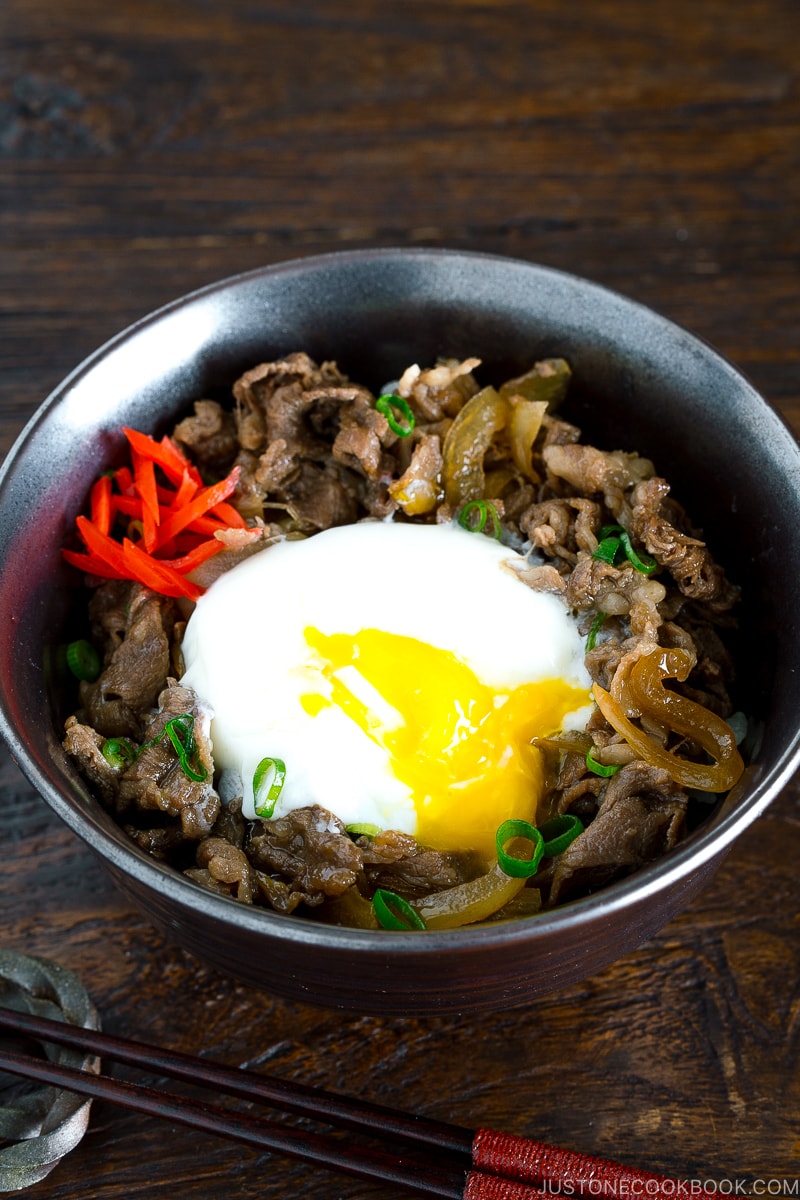
What to Serve with Yoshinoya Beef Bowl
We almost always serve donburi or rice bowl dish with miso soup. As you’re required to make dashi for this gyudon recipe, you might want to make a big pot of dashi. Take out some of the dashi for gyudon and keep the rest for miso soup.
Delicious Side Dishes
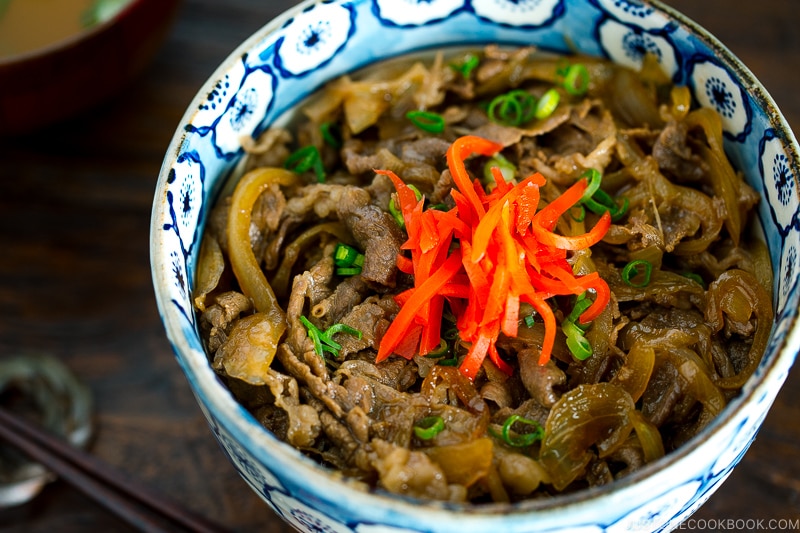
Wish to learn more about Japanese cooking? Sign up for our free newsletter to receive cooking tips & recipe updates! And stay in touch with me on Facebook, Pinterest, YouTube, and Instagram.
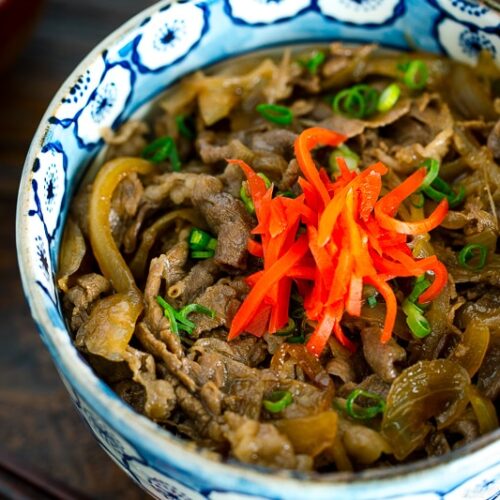
Yoshinoya Beef Bowl (Gyudon)
Video
Ingredients
- ½ onion (3 oz, 85 g)
- 1 green onion/scallion
- ½ cup dashi (Japanese soup stock) (use standard Awase Dashi, dashi packet or powder, or Vegan Dashi)
- 1 Tbsp sake
- 2 Tbsp mirin
- 1 Tbsp sugar (or more, to taste)
- 2 Tbsp soy sauce
- ¾ lb thinly sliced beef (chuck or ribeye) (12 oz, 340 g; I use komagire beef from the Japanese market; use shabu shabu beef for higher quality; or slice your own meat)
- 2 Tbsp pickled red ginger (beni shoga or kizami beni shoga)
For Serving
- 2 servings cooked Japanese short-grain rice (typically 1⅔ cups (250 g) per donburi serving)
- 2 onsen tamago (optional)
Instructions
Before You Start…
- Gather all the ingredients. For the steamed rice, please note that 1½ cups (300 g, 2 rice cooker cups) of uncooked Japanese short-grain rice yield 4⅓ cups (660 g) of cooked rice, enough for 2 donburi servings (3⅓ cups, 500 g). See how to cook short-grain rice in a rice cooker, pot over the stove, Instant Pot, or donabe.

- For the beef, I use assorted thin sliced beef labeled “komagire“ from my Japanese market and cut the slices further into smaller pieces. It works great for Gyudon. For higher quality, use shabu shabu beef. If you cannot find thin sliced beef in your local grocery store, you can slice your own meat. Freeze a block of fresh chuck or rib eye beef for 1–2 hours and then slice. If the pieces are too large after slicing, then cut them in half. See my tutorial for detailed instructions.

To Prepare the Ingredients
- Cut ½ onion into thin slices and slice 1 green onion/scallion into thin rounds. Set aside.

- Heat a large frying pan over medium-high heat and add ½ cup dashi (Japanese soup stock), 1 Tbsp sake, 1 Tbsp sugar, 2 Tbsp mirin, and 2 Tbsp soy sauce. Tip: Add more sugar, if you prefer a sweeter taste. I don‘t recommend reducing the amount, as you need to counterbalance the salt in the soy sauce.

- Cover the pan with a lid and bring the sauce to a boil. Once the sauce is boiling, add the sliced onions and spread them out in a single layer. Cover to cook until tender (make sure you cover the pan, otherwise the sauce will evaporate).

- When the onions are tender, add ¾ lb thinly sliced beef (chuck or ribeye) and cook until it‘s no longer pink. Remove the foam and fat with a fine-mesh skimmer.

To Serve
- Divide 2 servings cooked Japanese short-grain rice into individual serving bowls. Serve the simmered meat and sauce over the steamed rice.

- Top with the sliced green onions and 2 Tbsp pickled red ginger (beni shoga or kizami beni shoga). If you‘d like to top each bowl with an egg (optional), serve with 2 onsen tamago. Alternatively, you can pour beaten egg over the meat when it’s almost finished cooking in the pan (see how I do it in my other Gyudon recipe).

To Store
- You can keep the leftovers in an airtight container and store in the refrigerator for up to 3–4 days or in the freezer for a month.
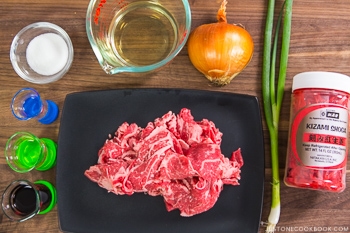
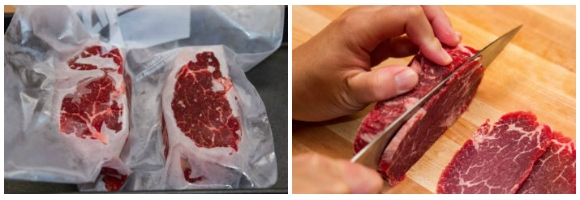
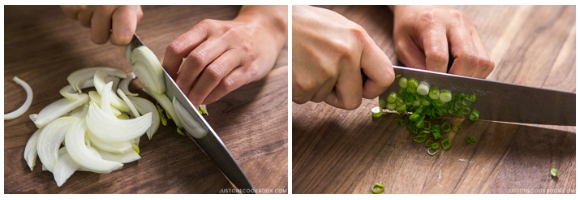
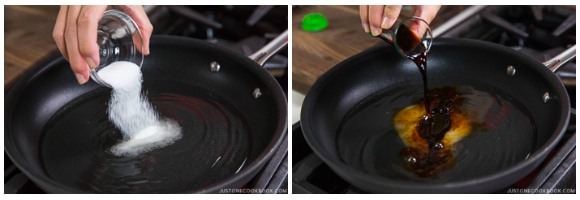
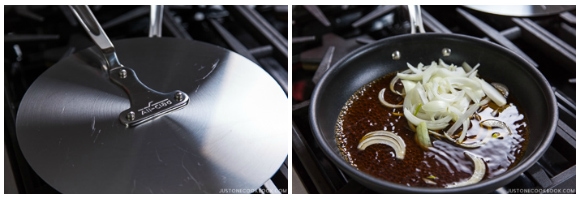
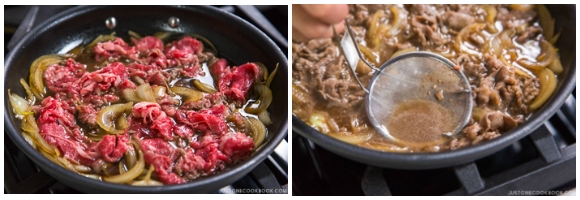
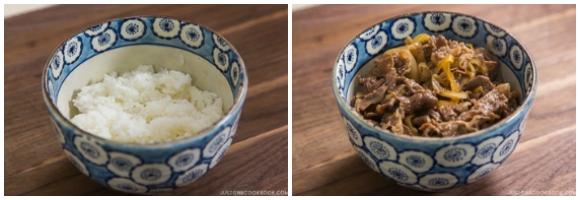
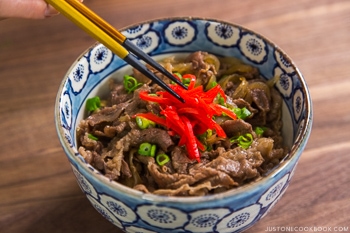

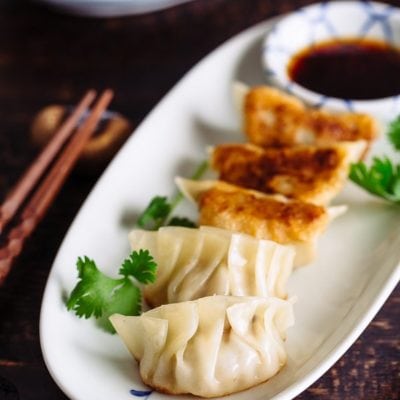
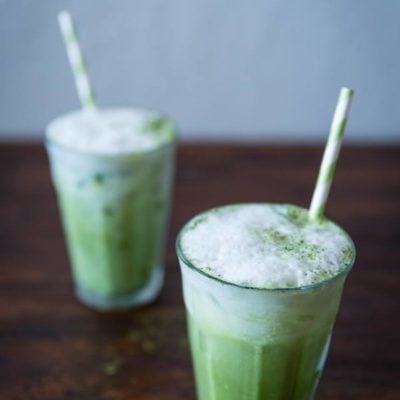


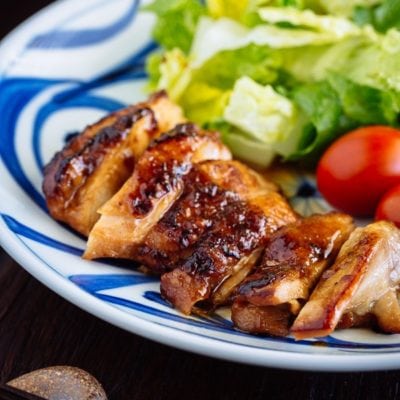
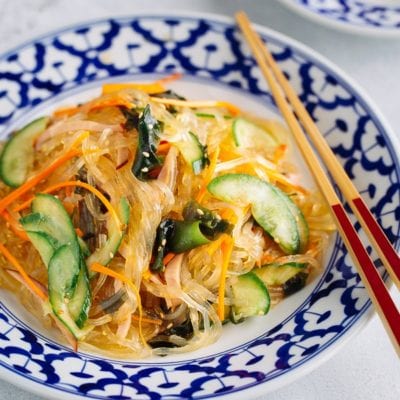
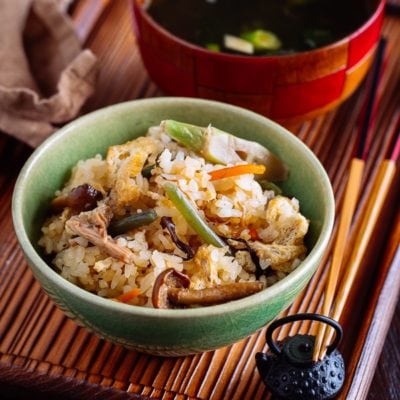
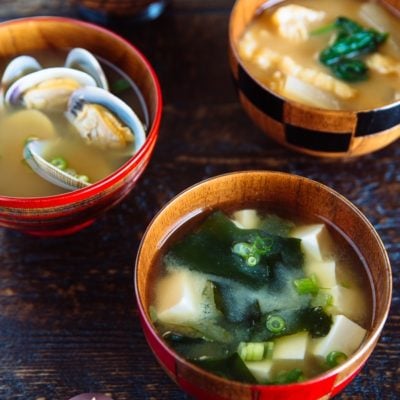
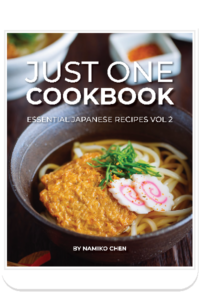
I would love to eliminate the granulated sugar. Could it be substituted with more Mirin?
Hi Sal! Sure, you can skip sugar and use a bit more mirin. 🙂
So excited to discover your site! We recently returned from a 3-week vacation in Japan, and I am seriously missing the food. Can’t wait to try some of these recipes at home!
Hi Stephanie! I hope your Japan trip was wonderful and hope that I have some of recipes on the blog that you enjoyed eating while you were in Japan. 🙂
First time I’ve ever had Yoshinoya, but it won’t be the last!
This recipe came together so easily. It would make a great week night meal. I served it with miso soup and bok choy. My boyfriend scarfed down two bowls in a blink of an eye.
Hi Lauren! Ahahahaha! I’m so happy to hear you two enjoyed this recipe! Thank you for trying this recipe and for your kind feedback, Lauren! 🙂
Many companies are coming out with their “bowls” and not very good.
Maybe you should put some out yourselves.
Also be good for us who live in backward ares that have and never will have a “Beef Bowl.”
Hi Stiofain! Thank you for your feedback. 🙂 I continue to encourage home cooks to try making their own at home. It’s not that hard, as long as you have the right ingredient to work with. 🙂
When would you add the shirataki noodles if using?
Hi Liliana! I’d add after putting the beef (at the same time). 🙂
Thanks!
I made this recipe about a week ago, It was great! Thanks for posting it. ^^ I just got back from Japan & was already missing Yoshinoya & Nakau. XD
Thank you for trying this recipe! I’m glad you enjoyed this recipe, Liliana! 🙂
Nami, I wanted to thank you for your easy and delicious recipes! I just returned from a vacation in Japan and am only cooking Japanese food at home now! This beef bowl and the yakisoba recipe have both worked for me perfectly in terms of flavors! (Except the noodles I got were not as good and broke apart when I tried to separate it, I will try to use only the brands you recommend next time!) The onsen egg was a delicious addition and the pickled ginger I bought at the Japanese market in Mountain View was perfect for both dishes too! Thank you so much for your careful recipes, helpful pictures for each step! Please keep posting more! I will be making your tonteki and udon recipes next!
Hi Lijia! Hope you had a wonderful trip to Japan, and how cool that you’ve been cooking Japanese food since you came back from the trip. 😀
Thank you for trying many of my recipes and I hope you will continue to enjoy cooking Japanese food at home! 🙂
I thank you, and my marriage thanks you for your recipe. It brought everyone and everything together in an astonishing way!
Hi Robin! Thank you so much for your kind feedback and words. I’m happy you two enjoyed this recipe! Thank you!!!
Thank you for this, I loved the Beef Bowl restaurant in Denver back in the 70s. I moved away and haven’t found the dish since. I’ve made it several times and it is wonderful. I buy a rib-eye roast at Costco, freeze it for awhile and then shave it using a mandolin. Measure it out into serving size, and vacuum seal and freeze for later use.
Hi Bruce! Your method is awesome! I’m glad you found a good mandolin that gives nice thin meat. 🙂 Thank you for trying this recipe so many times. xo
Nami, i ran out of sake. Can oi use Chinese wine or white wine to make it?
Hi Christiany! chinese rice wine is a good substitute. 🙂
When do the shirataki noodles go in?
Hi HR! I don’t add it, but you can. Make sure to rinse under cold water, then pre-boil for 2 minutes. Drain the water, and add the shirataki with meat. 🙂
Hi Nami,
No surprise at all, another keeper of a recipe! Made this for dinner tonight with sliced pork belly and added a large handful of shirataki noodles and my husband and I loved it. Just this week we had gyudon as a local restaurant and didn’t realize how easy and tastier it is to make at home. Thanks for sharing!
Janice
Hi Janice! I’m so happy to hear you tried this recipe at home! It’s one of the easiest quick meal in Japan. Homemade version is the best as you can use the best ingredients to make it at home and you can adjust the seasonings as you like. 🙂
I made this gyudon (with onsen tamago) for dinner tonight. It was quick, easy, and delicious. Great recipe – thank you!
Hi Kailey! Thank you so much for trying this recipe! I’m so happy you enjoyed it. 🙂 I appreciate your kind feedback too. xo
How do you know if the quality of meat is good or bad? i see rib eye and chuck all the time in the supermarket but Ive always thought you have to cook them for hours.
Hi Charlie! Not when they are thinly sliced (like paper thin thickness). Have you had shabu shabu (Japanese hot pot: https://www.justonecookbook.com/shabu-shabu/)? Rib eye or chuck are used for shabu shabu and you’ll only need a few seconds to cook. You’ll need some fat for tenderness, but you won’t need to cook that long when it’s thinly sliced. 🙂
Nami,
Just made your Yoshikoya Beef Bowl….It was fabulous! Easy,tasty and a keeper!!!
Thank you
Patty
Hi Patty! Yay!! I’m so happy to hear you liked this recipe. Thank you for trying and writing your kind feedback! 🙂
Thank you. I have always loved gyudon, it’s something I first learned about years ago through a Japanese drama I used go watch. Last year I finally got the opportunity to travel Japan and have gyudon from a couple different beef bowl shops during my time there. I was sad coming home realizing you cant find it anywhere where I live in the U.S. I’ve made it before but it’s never as good as what I had there. This recipe finally got all the ratios right. It was delicious! So good I almost wanted to cry.
Hi Chelsea! I’m glad to hear you enjoyed this recipe and thanks so much for your kind feedback. I know what you mean – the gyudon in Japan is so good; it’s such a simple dish, but the main difference is the ingredients themselves… rice in Japan is not comparable to what we can get here (I simply miss eating Japanese rice; I actually buy imported rice from Japan), beef is sweet itself and has just enough fat/marble to make it tender, and egg on top is so so soooo good… so hard to find ingredients to make it like Japanese ones! Oh well… we try our best by getting the best quality ingredients till we go back again to enjoy gyudon there! 🙂
Wow it looks delicious, i will try this Gyudon recipe, thanks for sharing.
Hi Junna! Hope you like this recipe! Thank you for reading my blog post. 🙂